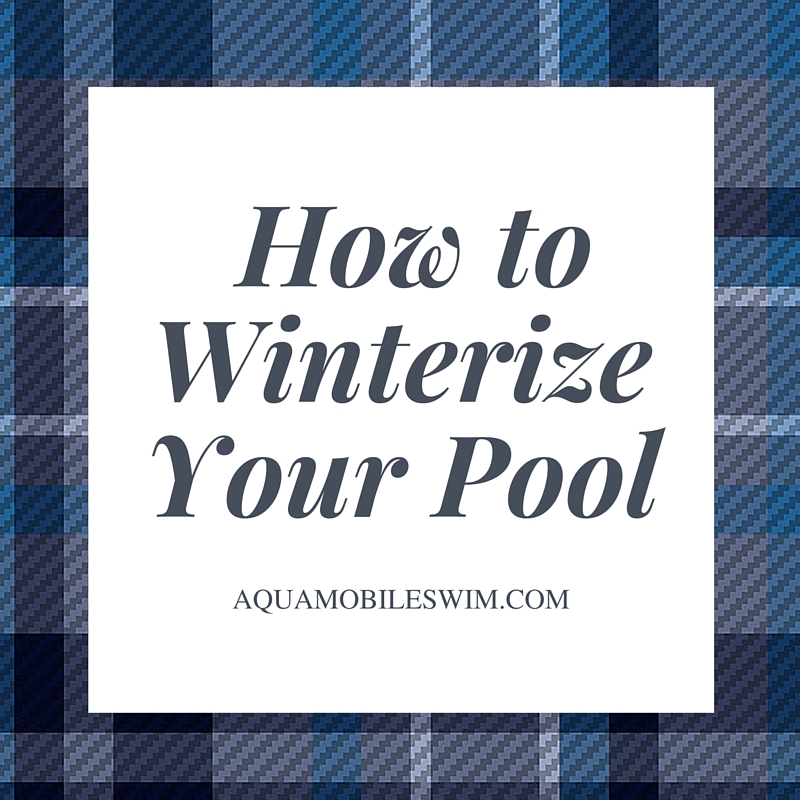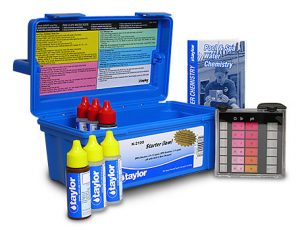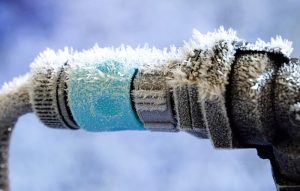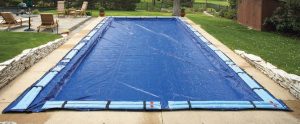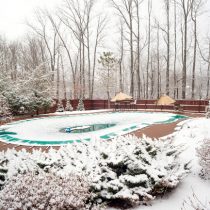
As the days get shorter, we start pulling out scarves and mittens for cool winter mornings. We should not forget about our backyard pools though. Taking care of your pool even in frigid temperatures will keep your pool around even longer. A pool that is not winterized can cause damage, which can cost thousands in repairs. Follow AquaMobile’s tips to keep your backyard paradise in tip-top shape for seasons to come!
1. Clean Out the Pool.
Pool water collectors leave, debris and dirt through the summer. Clean your pool using a pool vacuum or net. Don’t forget about your skimmer and pump baskets, as well as the “scum line” near the edge of the pool. Remove ladders, skimmer baskets, solar and other equipment and store them away for the winter. Avoid adding extra tablets or chlorine/bromine floaters that can damage immobile equipment. Let tablets in chemical feeders run out completely.
2. Make Sure Your Water Chemistry is Balanced.
The next step in winterizing your pool is protecting it from corrosion. Use a test kit to assess the following:
-
- pH: This measures the effectiveness of chlorine and should be between 7.2 and 7.6.
- Total Alkalinity: These levels determine the water’s ability to free chlorine and should range from 80-120 ppm.
- Calcium Hardness: Maintaining helps keep pool surfaces clean and should have levels of 180-220 ppm.
Each of these aspects of the pool’s chemistry should be paid attention to. This is true in both the summer and going into winter. The last thing you would want is your pool to be unsafe for swimming next summer.
3. Shock Your Pool with Winter Algaecide.
As chemical levels stabilize, add winter algaecide to the pool. There are kits specifically made for winterizing by pool retailers in a variety of sizes. Following the steps protects your pool from corrosion and scale-build-up over the winter months. Read instructions carefully because some chemicals require the pool filter to be turned on. This prevents stains, undissolved granules and high chemical concentrations.
Kid Safety Tip: Keep chemicals and PPE (Personal Protective Equipment) used to handle chemicals out of reach for children. Keep these items locked up away from people, children and pets to stay safe. Also, make children aware of the dangers of chemicals.
4. Freezing Factor: How to Evade The Number One Enemy.
The number one enemy of your pool in the winter is water itself. When it freezes, the expansion force is intense and can crack buildings, concrete and roads. Your pool can be affected if it is not properly protected. Here are some of the reasons to drain your pool just below the skimmer:
- Ensures water does not enter the skimmer or freeze
- Provides pool with weight to avoid being pushed up by the soil below
- Stops water from being displaced
Keeping the water from freezing is an essential part of winterizing your pool. Ice can damage your pool and affect the pump. Frozen water makes it more difficult for debris to escape as nothing inside can move all winter.
5. Disconnect and Drain The Pump and Filter.
Water must be drained or blown out of systems. Trapped water can freeze and crack pipes, fittings and hoses. This can result in major repairs costs and flooding. Follow the steps below!
- Disconnect the pump and filter and remove any drain plugs that may hold water inside. Turn the pump on for 1-2 seconds once it is drained to let the impeller get rid of any remaining water. Store small parts in the pump basket to be ready for next year.
- Drain and blow heaters using a compressor or shop vac. Remove any drain plugs and store them in the pump basket.
- Remove jet fittings and skimmer baskets. Items like fittings and dive board bolts should also be placed in the skimmer baskets.
- Loosen any quick-disconnect fittings or unions within your pump and filter system and then blow out the pipes. A shop vac or air compressor works well. Force air from the pump down the skimmer and through solutions in the pipes. Connect your compressor to the return lines at the filter system or by attaching it into the pump’s drain plug to blow out the return plumbing. Continue until you see air bubbles and then tightly plug the fitting below the water line.
- Blow out the main drain line if applicable. When you see bubbles coming out of the drain, close the gate valve. An air lock in the line means there is no more water to enter from the poolside.
Avoid the consequences that come with keeping your pump and filter connected during the wintertime. Be free of worry knowing that there is no water in either of these places left to leak into your pool.
6. Clean the Filter.
Cleaning a filter can be different depending on which one you have. Let’s go over a few of them.
- Sand Filter: Clean this one by backwashing. This means pumping the water backwards through the filter.
- D.E. (Dichotomous Earth) Filter: Remove filter elements and spray with filter cleaner and rinse clean with a garden hose.
Wait until spring to rinse the system out. Be sure to open the drain at the bottom to let excess water escape, while opening the air relief valve on top if present. Place the multiport valve in its winter position. Removing the pressure gauge makes sure your filter is winterized.
7. Cover Your Pool.
Covering your pool during the winter is the most obvious thing to do. This protects it from the elements. There are many of these, but there are ways to prevent them from getting in.
Place an air pillow in the center of the pool to absorb the pressure from the water and protect your pool walls. A tight cover keeps water, leaves and other debris out. A winter cover is stronger than a summer one and withstands snow and ice. Plus it stops anyone from falling in.
8. Make The Winterized Pool Safe For Your Kids.
You should never leave kids unattended around a pool. This does not change in the wintertime! This is especially true if ice and snow are around to make the ground slippery. Be sure to keep equipment and chemicals stored and out of reach to keep your children safe during the winter months.

